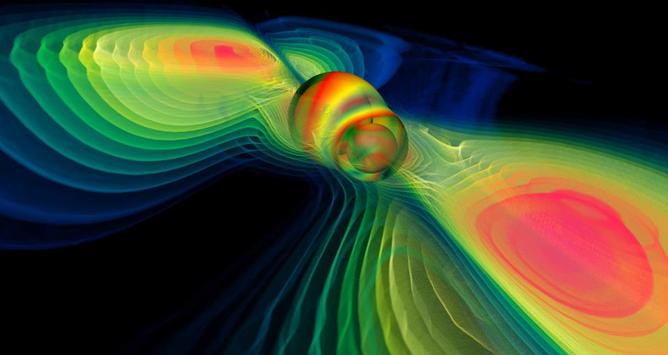Astronomy and particle physics have begun a new data-rich era of discovery, from finding warps in space and time to new particles in accelerators. But the data avalanche is so fast, so large and so complex that it's a challenge for computing. Artificial Intelligence, or AI, regularly offers no easy solutions. You may be surprised to find out that humans are still often much better than AI at classification tasks. This has led to a new way of doing science: crowdsourcing, with the help of citizen science volunteers. This gives members of the public genuine and valuable participation in scientific discovery, and it turns out that there is a huge public appetite for taking part.
You may be surprised to find out that humans are still often much better than AI at classification tasks.At the Open University, we have played and are playing leading roles in many large international research teams, and many of these teams are using both AI and citizen science to make new discoveries in their giant data sets.
For example, ASTERICS was an EU-funded consortium dedicated to joining together some of the world's biggest forthcoming astronomy and astroparticle physics facilities, so that they can operate jointly in the future for combined "multi-messenger" discoveries. If a collision of black holes is spotted by gravitational waves, or a gamma-ray burst detected from some distant relativistic explosion, then other facilities will be able to operate together and catch the event while it's still happening. Mining the giant data sets is a challenge for all these facilities, so we developed citizen science experiments to make new discoveries. In the Muon Hunter experiment, we asked volunteers to find high energy particles from space that create pretty rings in the VERITAS telescope. This project was a runaway success, achieving well over a million classifications in the first five days. Our SuperWASP Variable Stars project asked volunteers to spot different types of binary stars orbiting each other, in a hunt for exotic stellar neighbourhoods. The CREDO experiment took a different approach, asking volunteers to collect their own data by using their mobile phones as high energy particle detectors.
Human volunteers make a very real scientific contribution. There has never been a better time to get involved in science!Not every project has humans outperforming AI though. The forthcoming Euclid space telescope is a case in point. Teams of AI experts have been preparing for Euclid's launch by competing to trawl through simulated data to find warps in space and time. These warps, known as strong gravitational lenses, are visible when you have a one galaxy lined up almost exactly behind a closer galaxy. You see the background galaxy through the warped space of the foreground one. One valiant team of world-expert humans checked every simulated image by hand. To everyone's surprise, some AIs beat the humans, so we ran a Challenge The Machines citizen science experiment to see if this was just because those humans got tired, and to see whether anyone else could beat the AI.
We are now playing leading roles in new international research teams with similar challenges. The EU-funded ESCAPE consortium is dedicated to the creation of part of the European Open Science Cloud, opening up the world's largest forthcoming astronomy, astroparticle physics and fundamental physics facilities to the world. This is not just intended for expert users - ESCAPE aims to open up the data to the public too, facilitated by creating citizen science data mining projects. We have already launched two: Galaxy Zoo Clump Scout, which aims to work out why clumpy galaxies have gradually disappeared, and Radio Galaxy Zoo LOFAR, which aims to sort through the state of the art radio data and identify supermassive black holes and starforming galaxies. We are also part of the new REINFORCE collaboration, who will be creating several more citizen science experiments in physics, astronomy and geoscience.
In every case, human volunteers make a very real scientific contribution. There has never been a better time to get involved in science!
- ESCAPE - The European Science Cluster of Astronomy & Particle Physics ESFRI Research Infrastructures has received funding from the European Union's Horizon 2020 research and innovation programme under the Grant Agreement no. 824064.
- REINFORCE has received funding from the European Union's Horizon 2020 project call H2020-SwafS-2018-2020 funded project Grant Agreement no. 872859.
- ASTERICS is a project supported by the European Commission Framework Programme Horizon 2020 Research and Innovation action under grant agreement n. 653477

Rate and Review
Rate this article
Review this article
Log into OpenLearn to leave reviews and join in the conversation.
Article reviews